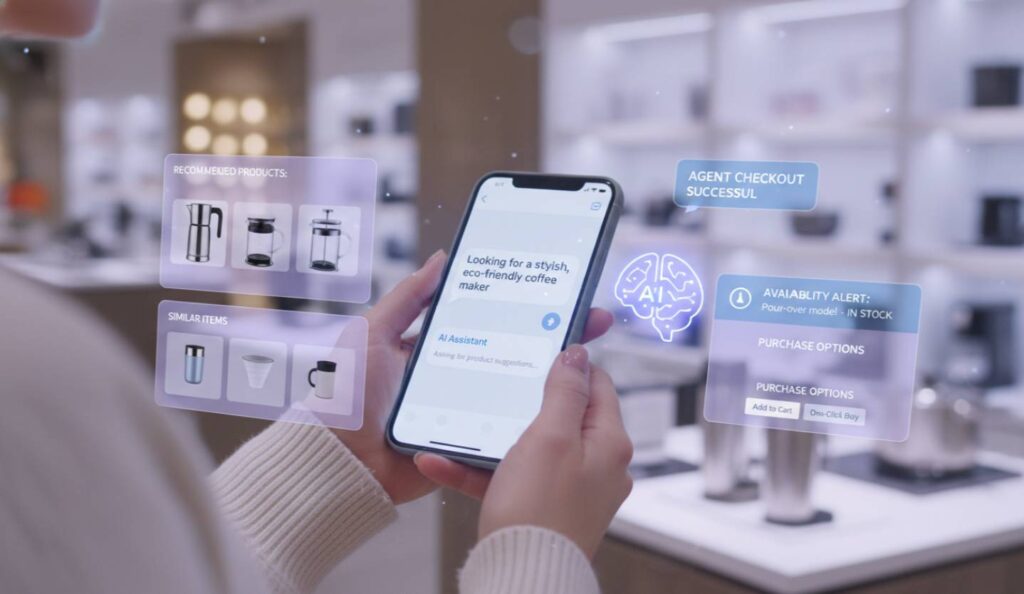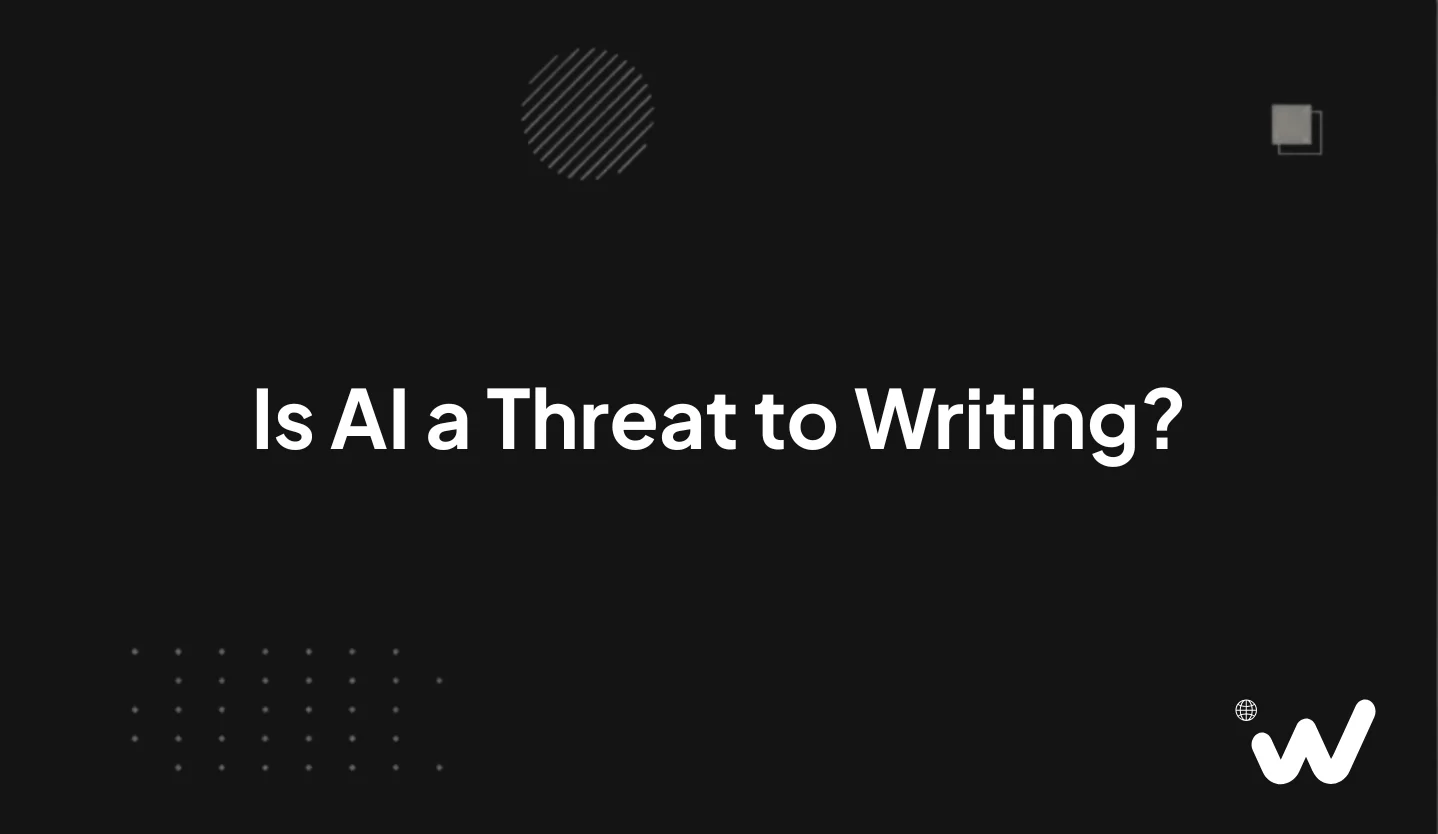There are moments in technology when the ground shifts under your feet and you realize the old rules no longer apply. Agentic commerce is one of those moments. Not a trend. Not a feature. A full-scale rewrite of how digital buying works.
For the first time, the shoppers aren’t humans clicking through pages. They’re autonomous AI agents acting on behalf of humans. They interpret intent, shortlist options, check availability, compare value, and even complete the transaction inside the conversation. No browsing. No funnels. No checkout flows. And absolutely no dependence on your front-end gradients, carousels, or micro-interactions.
Analysts are already predicting a global opportunity of three to five trillion dollars in agent-driven revenue by 2030. That is not hype. That is tectonic movement. And businesses that aren’t ready will quickly find themselves locked out of the most valuable discovery channel of the coming decade.
This shift explains why the Agentic Commerce Protocol, created by OpenAI and Stripe, is becoming the new backbone of how AI agents transact with businesses. Brands like SKIMS, Glossier, and Etsy aren’t experimenting for fun. They’re racing ahead because companies that adapt early will capture the new distribution advantage while others continue optimizing landing pages.
Let’s look at what this means for a CTO guiding a high-volume commerce platform today.
A New Kind of Commerce Stack
In the agentic world, your “storefront” is no longer your website. It is your data, your APIs, and your security systems. The experience happens between the agent and your backend, and the quality of that backstage performance determines whether your product ever reaches a user.
This ecosystem is powered by three emerging standards. Together, they form the foundation of agentic commerce.
ACP: The Action Layer
ACP is the language agents use to take commercial actions. It structures offers, carts, and checkout in a format built for machine interaction. It plugs into your existing stack and keeps you as the Merchant of Record, so you maintain control of fulfillment, returns, policies, and customer relationships.
MCP: The Discovery Layer
MCP handles the search and evaluation phase. Agents use MCP endpoints to pull product data, inventory levels, pricing, and metadata. If your MCP endpoint is slow or inconsistent, the agent simply removes you from consideration. No ranking drop. No warning. You are replaced instantly. This is why MCP is becoming the new version of SEO.
AP2: The Trust Layer
AP2 provides the legal and security infrastructure. Its core mechanism is the Mandate system, which gives agents a cryptographically verifiable record of what the user asked for and approved.
ACP gives you speed. MCP gives you visibility. AP2 gives you legal integrity. All three matter.
Security in an Agent-Led Commerce World
The first challenge most CTOs consider is how to let agents buy things without exposing sensitive payment data. Shared Payment Tokens (SPTs) solve this elegantly.
SPTs allow an agent to initiate a transaction using a shopper’s preferred payment method without ever seeing the underlying credentials. They are scoped to a specific merchant, limited by amount and time, instantly revocable, and monitored through webhooks. Fraud intelligence from tools like Stripe Radar strengthens the safety net.
This gives you a technical enforcement layer for “Human-in-the-Loop” oversight. If the user changes their mind or something suspicious occurs, you can immediately block the action.
Mandates (from AP2) build on this by offering cryptographically secure proof of intent. They give you a defensible audit trail for regulators and dispute scenarios. This is non-negotiable for high-value merchants and regulated industries.
What the First Six Weeks Look Like
Becoming agent-ready is not a long transformation if you focus on the essentials: clean data, reliable APIs, and clear compliance.
Weeks 1–2: Clean Your Data
Agents do not guess the truth. They read it as facts. Your job is to make sure your product data is consistent, structured, real-time, and machine-friendly. Any stale or inconsistent facts lead to instant removal from the agent’s shortlist.
Weeks 3–4: Build the Core APIs
Create lightweight, predictable endpoints for MCP search, ACP offers, carts, checkout, and token handling. Reliability and latency matter far more than design or presentation. This is when engineering shifts from UI priorities to backend performance.
Weeks 5–6: Build Credibility and Compliance
Once the architecture works, the agent needs clear and reliable content to reason through. Create buying guides, comparisons, FAQs, and specification documents. Update privacy and consent policies to include agent-driven actions. Train support teams to identify agent-originated orders, then test your token and consent safety systems.
New Metrics for an Agentic Era
If the agent is doing the shopping, traditional analytics no longer represent the real buying journey. New KPIs matter more.
Agentic Inclusion Rate (AIR)
How often the agent includes your product in its shortlist.
This reflects data quality and MCP performance.
Agentic Conversion Rate (ACR)
How often an offer shown by the agent turns into a completed ACP checkout.
This depends on API stability, latency, and token handling.
Narrative Fitness (NF)
How confidently an agent can talk about your product using your documentation.
Structured, source-backed content improves NF significantly.
To measure any of this, you’ll need server-side tracking and a unified customer identity layer. Otherwise, agent-originated revenue becomes invisible “dark traffic.”
How Teams Need to Align
Agentic commerce reshapes responsibilities across the organization.
- Engineering becomes responsible for what is effectively your new storefront: API stability, speed, and security.
- Ecommerce/Product manages data accuracy, catalog structure, and inventory integrity.
- Legal/Compliance sets consent rules, ensures regulatory alignment, and prepares for AP2.
- Content/Brand produces structured, factual documentation that agents use to reason.
- Support must understand agent-originated identifiers and handle those orders confidently.
Agentic commerce naturally forces cross-functional alignment.
A Roadmap from Foundation to Maturity
Phase 1: Foundation (Weeks 1–4)
Clean data. Build MCP and ACP endpoints. Establish consent policies and SPT handling.
Phase 2: Compliance Hardening (Weeks 5–8)
Integrate fraud scoring, improve logging, strengthen policies, and train teams.
Phase 3: Optimization (Months 3–6)
Pilot ACP with platforms like ChatGPT Instant Checkout. Track AIR, ACR, and NF. Begin planning for AP2 Mandate adoption.
Phase 4: Scaling (Month 7+)
Roll out fully. Add trust platforms. Strengthen cross-border compliance and prepare for legislative frameworks like the EU AI Act.
The Final Word
Agentic commerce isn’t a UI upgrade. It reshapes how commerce works at an architectural level. Your backend becomes your brand. Your APIs become your storefront. Your data becomes your pathway to discovery.
Companies that adapt now will own an entirely new distribution channel. Companies that delay will slowly fade from the agent’s field of view and lose visibility without ever realizing where the traffic went.
ACP is your entry point. Real advantage comes from clean data, stable APIs, strong consent controls, and content that makes agents trust recommending you.



